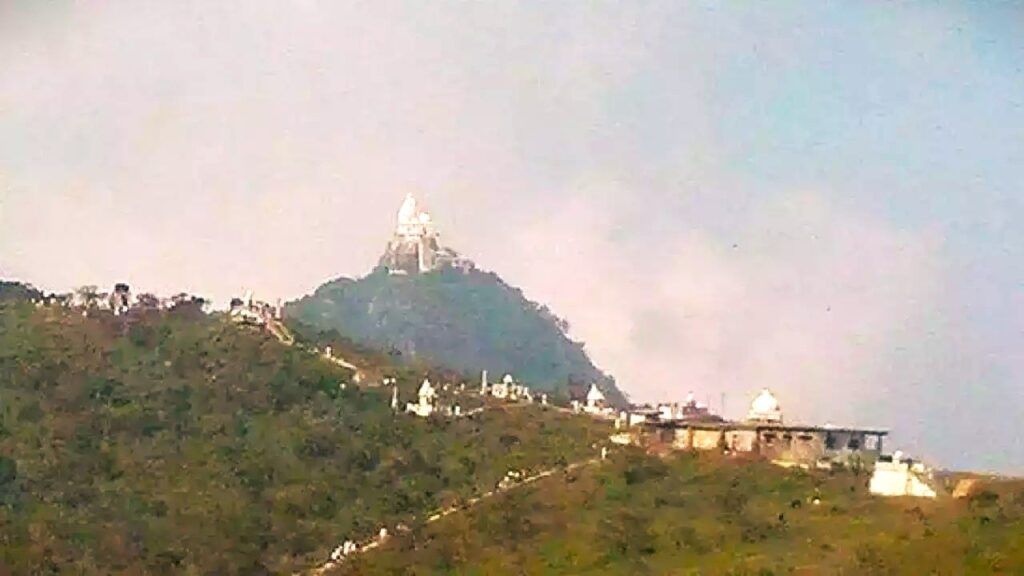Among the countless holy places in India, Sammed Shikharji holds an unparalleled position in the hearts of Jains. Located in the Giridih district of Jharkhand, this sacred hill is not just a geographical destination but a spiritual summit of faith, devotion, and liberation. Known as “Sammed Shikhar” or “Parasnath Hill”, it is revered as the most important pilgrimage site because 20 out of the 24 Jain Tirthankaras attained Moksha (liberation) here.
For devout Jains, visiting Shikharji is not just a one-time journey—it is a lifelong commitment. Many families make it a tradition to visit the holy hill every year, regardless of the challenges. But why this insistence on annual visits? What makes the experience so unique that devotees return year after year?
This blog dives deep into the spiritual, cultural, mental, and personal reasons why Sammed Shikharji should be visited every year.
Spiritual Significance of Annual Pilgrimage
A Sacred Path of Liberation
The 27 km parikrama (circumambulation) of Shikharji is not an ordinary trek; it is a sacred journey that retraces the path of Tirthankaras. Each step resonates with their final spiritual achievements. Walking on these hills every year renews a devotee’s connection to Jain philosophy, reminding them that the ultimate goal of life is moksha.
Purification of the Soul
Every annual visit is an opportunity to shed the burdens of worldly attachments. The climb, the chanting of Navkar Mantra, and the darshan at each tonk (shrine) cleanse the inner self. Just as one bathes daily to wash away dirt, an annual visit to Shikharji purifies the soul.
Strengthening Faith
Returning each year deepens devotion. The more one walks the parikrama, the stronger their belief becomes that liberation is achievable through faith, discipline, and righteousness.
Cultural and Religious Value
Preserving Tradition
For centuries, Jain families have traveled together to Shikharji. By making it an annual ritual, parents pass on values of faith, discipline, and devotion to the younger generation. It becomes a living classroom of Jainism, teaching not through words but through experiences.
Collective Worship
The yatra is not just a personal journey but a communal act of worship. Walking with thousands of fellow Jains, chanting prayers together, and performing rituals at shrines strengthen the feeling of unity within the community.
Rituals and Observances
Each annual trip allows devotees to perform traditional rituals—be it fasting, offering puja, or meditating at tonks. These observances become milestones in a devotee’s spiritual journey.
Physical & Mental Benefits
A Natural Detox
The pilgrimage involves climbing steep hills, trekking long distances, and spending hours in serene surroundings. Away from gadgets and the hustle of modern life, the body undergoes natural detoxification, while the mind finds stillness.
Physical Fitness
The climb is physically challenging, yet devotees often describe it as rejuvenating. An annual trek to Shikharji helps in maintaining health, stamina, and resilience.
Inner Calmness
Sitting in silence at the tonks or chanting while walking induces meditative peace. This mental reset helps devotees face life’s challenges with clarity and calmness.
Sense of Community & Togetherness
Meeting Fellow Devotees
Every year, pilgrims from across India and the world gather at Shikharji. The bonds formed during these yatras often last a lifetime. Meeting like-minded devotees inspires and strengthens one’s faith.
Family Bonding
Families that visit Shikharji together experience a rare closeness. Walking miles together, sharing simple meals, and supporting each other on the climb create memories that last forever.
Global Jain Identity
Annual visits reinforce the global unity of Jainism. Whether one is from Mumbai, Jaipur, London, or New Jersey, Shikharji binds all Jains under one spiritual umbrella.
Annual Renewal of Vows & Discipline
Revisiting Jain Values
Life’s distractions often pull us away from spiritual principles. An annual visit works like a reset button, reminding devotees of Jain vows like Ahimsa (non-violence), Satya (truth), and Aparigraha (non-attachment).
Humility and Gratitude
Climbing barefoot, eating simple food, and living austerely during the yatra teach humility. Devotees are reminded to remain grateful for life’s blessings.
Staying Focused on Liberation
Each year’s pilgrimage reinforces the idea that liberation is the ultimate goal of human life, beyond wealth, success, or material achievements.
Preserving Tradition & Supporting Pilgrimage Economy
Supporting Local Communities
Each visit contributes to the economy of the region. From dharmashalas (pilgrim accommodations) to local guides and workers, annual yatras help sustain livelihoods.
Upkeep of Holy Sites
Regular pilgrimages ensure that temples, shrines, and dharmashalas remain well-maintained for future generations.
Passing the Torch
Annual visits keep the flame of tradition alive, ensuring that the sacredness of Shikharji is not forgotten but carried forward by children and grandchildren.
Personal Transformation Stories
Many devotees describe their annual visit as life-changing. Some feel a renewed sense of purpose, others experience spiritual visions, while many simply find peace. Stories circulate of businessmen, students, and homemakers who credit their yearly Shikharji yatra for their success, resilience, and moral clarity.
One devotee described it beautifully:
“Each time I climb Shikharji, I feel I am climbing closer to my true self.”
Practical Reasons for Visiting Every Year
- The experience changes each time: weather, company, and one’s own mindset make each yatra unique.
- Annual visits keep one disciplined in maintaining physical fitness for the trek.
- Life is unpredictable—making time for this journey each year ensures one never postpones spiritual growth.
Conclusion
Sammed Shikharji is not just a hill; it is a living embodiment of liberation. To visit once is a blessing, but to return every year is a spiritual necessity for those who wish to stay rooted in Jain values, community, and inner purity.
Each annual yatra renews faith, strengthens the soul, and keeps tradition alive. In a world full of distractions, Sammed Shikharji serves as a reminder that life’s true purpose lies in spiritual growth and liberation.
So, make it a tradition. Climb, pray, purify, and return every year. Let every step on Sammed Shikharji be a step closer to Moksha.
FAQs About Sammed Shikharji
Sammed Shikharji is the most sacred pilgrimage site for Jains because 20 of the 24 Jain Tirthankaras attained Moksha (liberation) here. The hill is dotted with shrines (tonks) marking these spots, making it the ultimate destination for spiritual seekers.
Annual visits are seen as a way to renew one’s faith, cleanse the soul, and reaffirm Jain values. It strengthens devotion, helps pass traditions to the next generation, and provides spiritual, physical, and mental benefits.
The complete parikrama (circumambulation) is about 27 km and usually takes 8–12 hours on foot, depending on one’s stamina. Many devotees complete it in a single day, while some choose to spread it over two days.
Yes, the yatra involves steep climbs and long walking distances. However, devotees believe the effort itself is a form of penance and spiritual purification. With proper preparation, most healthy individuals can complete the journey.
Absolutely. Families often visit together, and children are encouraged to participate to learn about their cultural and spiritual heritage. Dharmashalas and facilities along the route make it manageable for families.
The best months are October to March, when the weather is cooler and more comfortable for trekking. Many families prefer to align their visits with special Jain festivals or auspicious dates.
While the site holds supreme significance for Jains, people of other faiths also visit to experience its serenity, natural beauty, and spiritual energy. However, they are expected to respect the customs and sanctity of the place.
Just like meditation or prayer strengthens the mind when practiced regularly, annual visits to Shikharji act as a spiritual recharge. It helps devotees stay focused on their ultimate goal—liberation (moksha).






